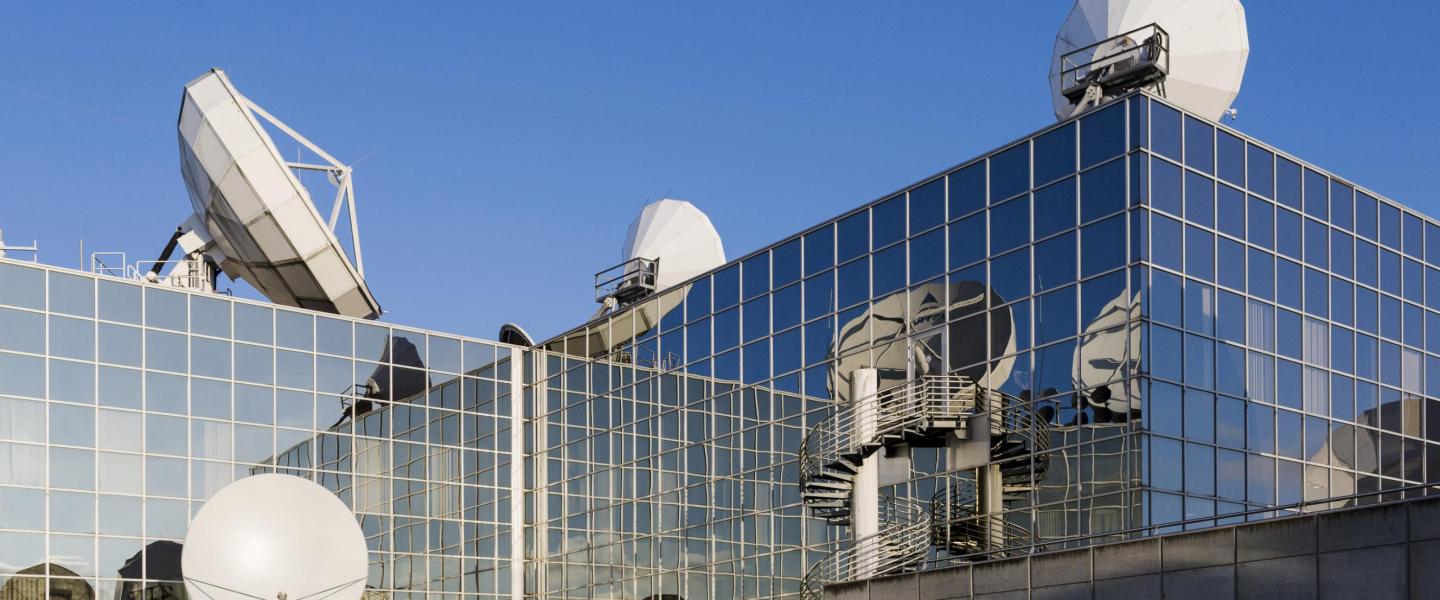WRC-19 Affirms Importance of Satellite, Ensures Clear Path for Growth for Key Technologies

Wireless technologies are fundamental to modern life: from posting on Instagram, to transmitting an x-ray from a rural hospital to doctor miles away, from watching Netflix on a plane to conducting a global stock transaction. Spectrum is a finite resource, and has to be shared between different applications and services. The International Telecommunications Union Radiocommunication Sector (ITU-R) meets every four years at the World Radiocommunication Conference (WRC) to revise the Radio Regulations. WRC-19, which concluded on November 22nd, saw agreements signed based on deliberations by 3,400 delegates from 165 Member States, with the Final Acts detailed in a 567-page document. We talked to Christophe De Hauwer, Chief Strategy and Development Officer at SES, to learn more about some of the key decisions made this year.
Results of WRC-19 seem to be a major step towards validating the importance of satellite. Can you tell us more about it?
This year’s WRC was of particular importance not only to SES but to the satellite industry. Firstly, for the last few years, the cellular industry has been very vocal in its demand for additional spectrum – some of which is in frequencies used by satellite. And secondly, because there has been a plethora of filings for Non-geostationary Orbit (NGSO) constellations all of whom need clarified, predictable regulatory conditions.
We are very happy with the outcome of WRC-19. Decisions made not only protect our existing operations, but also assign additional frequencies for satellite operations. Specifically, 18/28 GHz (Ka-Band), 11/14 GHz (Ku-Band) and 4/6 GHz (C-Band) were all protected. In addition, 1 GHz between 51.4-52.4 GHz was made available for fixed-satellite (FSS) gateways with flexible rules permitting the deployment of low-cost antennas.
All of these regulatory decisions are important and represent a major step forwards validating the key role of satellite in today’s wireless world. However, it is worthwhile mentioning the 28 GHz band in particular. This is used in many parts of the world for consumer broadband, but lies in the millimeter wavelength that the cellular industry wanted for 5G. Whilst we are a keen supporter of 5G, and active in many industry associations to ensure that satellite plays an integral part in the technology, we also appreciate just how important the 28 GHz band is for so many of our customers and those of other satellite operators around the world. So, we are particularly pleased that the rights to this band remain the same for the satellite industry.
The NGSO constellations were discussed extensively at WRC-19. Is SES pleased with the outcome?
Very much so. In the last few years there have been numerous filings for constellations, some of which consist of many thousands of satellites. Obviously, not all of these will get launched. But what it does mean, is that without adequate protections, assigned frequencies may end up being “warehoused”, assigned but never used. The new regulations introduce requests to meet defined milestones when bringing constellations into operation, so that this warehousing cannot happen. This is something that benefits every active satellite operator.
The word “interference” cropped up in several places. Can you explain why the provisions made to prevent this are so important?
Yes, of course. In many cases spectrum is shared between different applications. SES operates both GSO, and with the current O3b MEO (Medium earth Orbit) and upcoming O3b mPOWER, NGSO satellites. We also have fixed terrestrial customers and mobile customers in both orbits. As an experienced operator, we take steps to ensure that our satellites do not cause interference. However, it is to the benefit of the whole industry that WRC-19 affirmed which service has the primary right where spectrum is shared. So, we now know that portions of the Q and V-Bands are allocated on a primary basis to the Fixed Satellite Services (FSS); and that NGSO systems using these frequencies shall not cause unacceptable interference to GSO FSS networks. Additionally, unless otherwise specified in the Radio Regulations, NGSOs shall not claim protection from GSO FSS and BSS satellite networks.
The other area where it cropped up, is in reference to Earth stations in motion (ESIM). We have many customers in this rapidly growing segment and all of them need access to spectrum - spectrum which is shared with fixed terrestrial terminals. To address this, a framework was established permitting ESIM to communicate with GSO satellites in Ka-Band, providing that they do not cause unacceptable interference to fixed terrestrial services operating in the same frequencies. This decision is of vital importance to those expanding markets. Not only is broadband used for operational requirements, passengers and crew alike expect the same connectivity whether at home, on the ocean or in the air. However, at the same time as affirming their access to the spectrum, the clarified regulation provides protection for the many users of fixed terrestrial terminals.
Are you confident that WRC-2019 will enable the satellite operators to continue providing services in the next 4 years?
Absolutely! As I mentioned, we’ve gained additional spectrum, our existing operations have been protected and clear rules to prevent interference between different services and constellations have been established. We really appreciate the work put in over the last four years by numerous participants from governments and industries around the world, that led to these regulations being put in place. I also want to thank the SES Spectrum and Regulatory teams for the fantastic achievement at WRC-19, we genuinely have the best team from our entire industry. With a very special thanks to Anna Marklund who led the SES delegation this year!
What does this mean for SES’s customers?
Combined, these decisions create a solid foundation for SES’s plans for continued innovation and expansion of our satellite-enabled services. With additional spectrum for new services, such as 5G allocated outside of essential satellite frequency bands, WRC-19 ensured that all technologies have a clear path for growth. In addition, our customers can be confident that the frequencies that they are currently using will continue to be available, so no repointing of antennas or new equipment will be needed for existing services.




